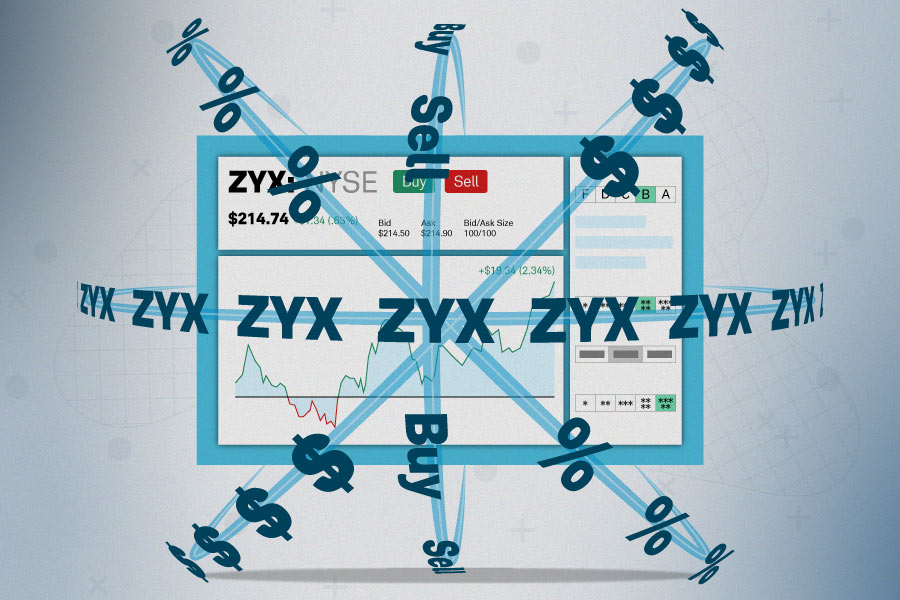Insights & Education
Keeping you at the forefront of modern investing
The latest commentary
Bonds: What Could Go Wrong?


Market Snapshot

Stocks Down as Tech Slides

EM: AI Opportunity and AI Risk

Washington: What to Watch Now
Investing Basics

Technical Analysis
Popular in trading
Reasons People May Buy Crypto


Q4 2026 Bank Earnings Ahead

How to Protect a Crypto Wallet

How to Use Heikin Ashi Charts

Stock Options Trading Stats

Learn to Read Stock Quotes
Planning and retirement
Financial Steps After Spouse Loss


Eat at Home, Build Wealth

Manage Your Money in a Divorce

Equity Compensation—Fun Money?

Ways to Pay for College

Automate Your Financial Future
Schwab original podcasts

Onward magazine

Charitable Giving
Annuities
Insurance
Estate Planning
Explore more topics
This material is intended for general informational and educational purposes only. This should not be considered an individualized recommendation or personalized investment advice. The securities, investment products and investment strategies mentioned are not suitable for everyone. Each investor needs to review an investment strategy for their own particular situation before making any investment or trading decisions.
All expressions of opinion are subject to change without notice in reaction to shifting market conditions. Data contained herein from third party providers is obtained from what are considered reliable sources. However, its accuracy, completeness or reliability cannot be guaranteed.
For illustrative purposes only. Individual situations will vary. Not intended to be reflective of results you can expect to achieve.
Investors should consider carefully information contained in the prospectus, or if available, the summary prospectus, including investment objectives, risks, charges, and expenses. You can request a prospectus by calling 800-435-4000. Please read the prospectus carefully before investing.
Investing involves risk, including, for some products, more than your initial investment.
Past performance is no guarantee of future results.
Equity and index options carry a high level of risk and are not suitable for all investors. Certain requirements must be met to trade options through Schwab. Please read the Options Disclosure Document titled "Characteristics and Risks of Standardized Options" before considering any option transaction. Supporting documentation for any claims or statistical information is available upon request.
Hedging and protective strategies generally involve additional costs and do not assure a profit or guarantee against loss.
With long options, investors may lose 100% of funds invested.
Spread trading must be done in a margin account.
Multiple leg options strategies will involve multiple transaction costs.
Covered calls provide downside protection only to the extent of premiums received, and prevent any profitability above the strike price of the call.
Futures, and Futures options trading involves substantial risk and is not suitable for all investors. Please read the Risk Disclosure Statement for Futures and Options prior to trading futures products.
Forex trading involves leverage, carries a substantial level of risk, and is not suitable for all investors. Please read the Risk Disclosure for Forex: https://www.schwab.com/resource/forex-risk-disclosure-statement.
Futures and forex accounts are not protected by the Securities Investor Protection Corporation (SIPC). Forex accounts do not receive a preference in any bankruptcy proceeding pursuant to Part 190 of the CFTC's regulations.
Read additional CFTC and NFA futures and forex public disclosures for Charles Schwab Futures and Forex LLC.
Futures, futures options, and forex trading services provided by Charles Schwab Futures and Forex LLC. Trading privileges subject to review and approval. Not all clients will qualify. Forex accounts are not available to residents of Ohio or Arizona.
Charles Schwab Futures and Forex LLC., is a CFTC-registered Futures Commission Merchant and NFA Forex Dealer Member.
Charles Schwab Futures and Forex LLC (NFA Member) and Charles Schwab & Co., Inc. (Member SIPC) are separate but affiliated companies and subsidiaries of The Charles Schwab Corporation.